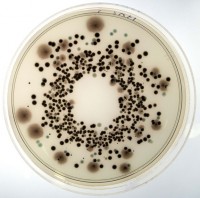Members Login

Channels
Special Offers & Promotions
Lab M meets the Salmonella challenge
 News of the recent emergence of the
multidrug-resistant Kentucky strain of
Salmonella, which has a high level resistance to
ciprofloxacin (a common treatment for severe Salmonella infections), focuses
attention once again on the need for vigilance to prevent its further spread. Lab M's
comprehensive and proven range of media for the isolation and culture of
Salmonellae from foods and animal feed offers a convenient choice of
methodologies to fit individual laboratory testing requirements.
News of the recent emergence of the
multidrug-resistant Kentucky strain of
Salmonella, which has a high level resistance to
ciprofloxacin (a common treatment for severe Salmonella infections), focuses
attention once again on the need for vigilance to prevent its further spread. Lab M's
comprehensive and proven range of media for the isolation and culture of
Salmonellae from foods and animal feed offers a convenient choice of
methodologies to fit individual laboratory testing requirements. With so much emphasis on rapid identification, HarlequinTM Salmonella ABC Medium dramatically reduces the need for 'false positive' screening, saving labour and reducing consumable costs. This dual chromogen medium enables the isolation of Salmonellae (including Salmonella typhi and S. paratyphi) from food and clinical samples.
For selective enrichment, Lab M's Mueller Kaufmann Tetrathionate Novobiocin Broth (MKTTn) is formulated to inhibit the growth of Proteus species and allow Salmonellae to thrive. Further support is provided with the inclusion in the range of semi-solid MSRV Medium for the rapid detection of motile Salmonellae; Diassalm, a semi solid differential medium for the isolation of Salmonella spp. from food and water; and XLD Agar. Originally designed to improve the recovery and recognition of Shigella spp., XLD has proved to be an excellent medium for culturing Salmonellae.
For all your Salmonella culture needs visit the Lab M website www.labm.com
Media Partners


